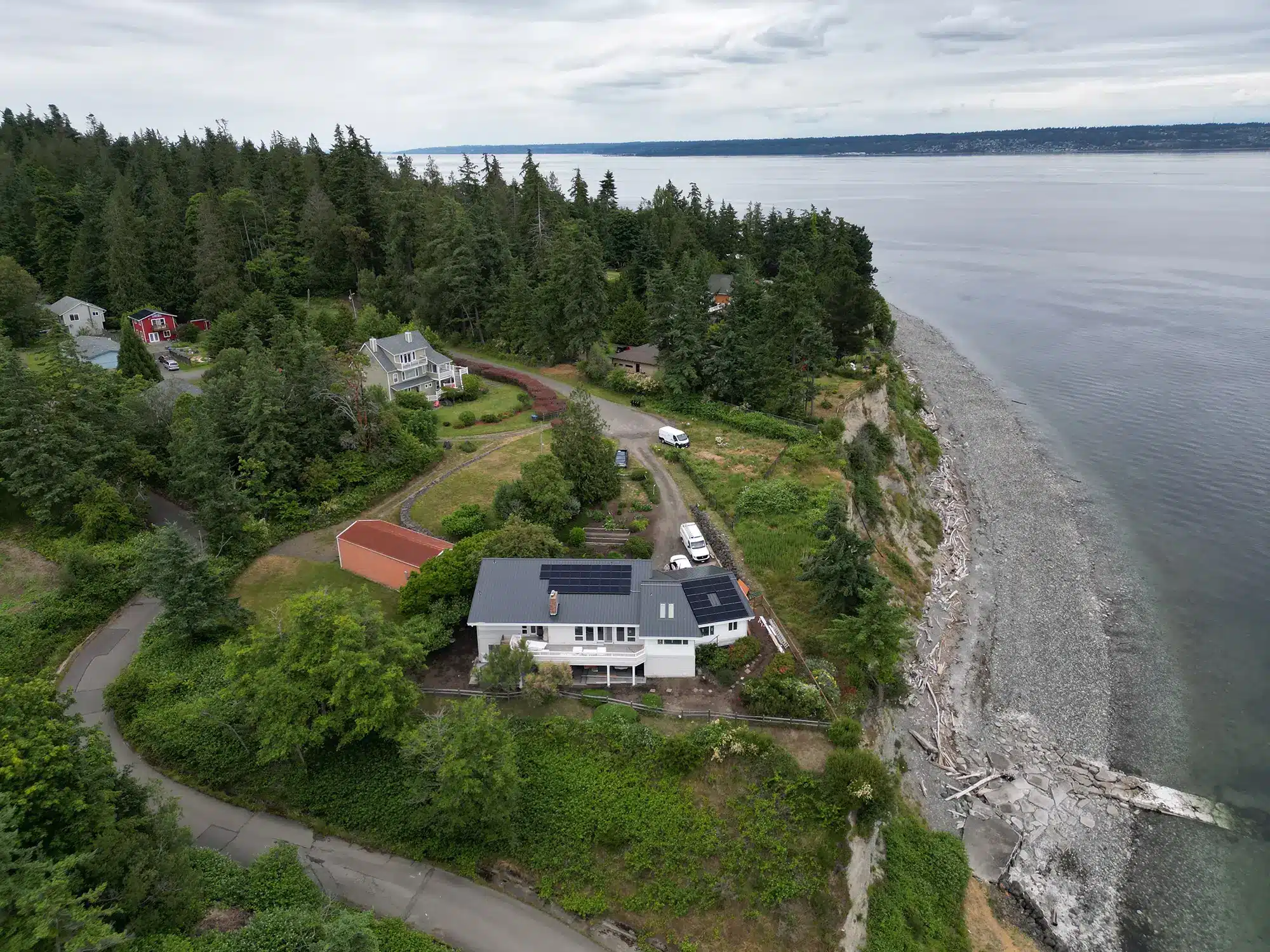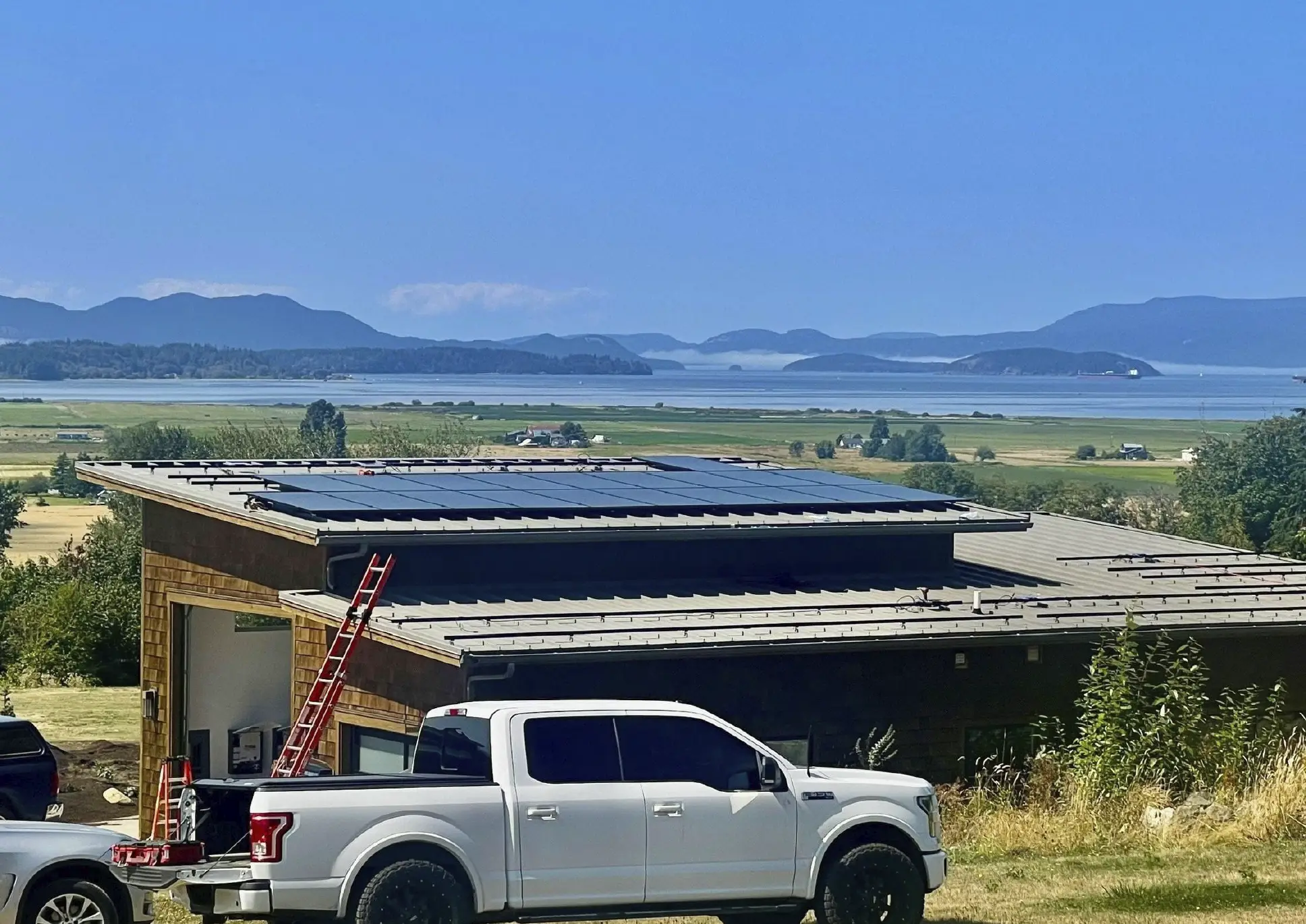As the adoption of solar energy grows, the methods and technologies for securely attaching solar panels to roofs have become increasingly important. Proper roof attachments are critical for the safety, efficiency, and longevity of a solar installation. In this blog post, we will discuss the various types of roof attachments, their benefits and consideration for choosing the right attachment when working with a solar installation company.
Solar Roof Mounts in the Puget Sound Area
There are several factors specific our Puget Sound and Greater Seattle area that should be considered. Our wind and rains that give us the lush forestation can also impact solar roof mounts in ways unique to the PNW.
High Rainfall and Moisture
Due to the high levels of rainfall and moisture, it is critical to use mounts made from corrosion-resistant materials, such as stainless steel or aluminum to prevent rust and ensure durability.
Wind Load
The Puget Sound area, especially island areas including Island County, Skagit County, and Kitsap County can experience very strong winds, although we all face strong winds from time to time in the PNW. Secure fastening systems are essential to prevent panels from being dislodged. Flashing and mounts need to be designed to withstand high wind loads.
Understanding the Terminology of Roof Attachments.
Properly securing solar panels to your roof is a multi-step consideration of safety, efficiency and roof integrity. Solar installation companies may use one of the terms below that you should know when discussing this topic.
1. Flashings: Metal plates that are installed under shingles to create a watertight seal around the mounting hardware.
2. Standoffs: Raised mounts that lift solar panels off the roof surface, allowing for air circulation and cooling.
3. Tile Hooks: Designed specifically for tiled roofs, these hooks are installed under the tiles and provide a mounting point for solar panels.
4. Rail-less Systems: These systems attach directly to the roof, eliminating the need for mounting rails.
5. Ballasted Mounts : Used primarily on flat roofs, these systems rely on weight rather penetrations to hold panels in place.
Understanding these terms and their significance helps consumers make informed decisions about their solar installations. Each type of mount has its specific applications, benefits, and considerations based on the roof type. By being familiar with these terms, consumers can better communicate with installers, ensuring they select the most appropriate and effective mounting systems and their specific needs (Solar Power World).
First Considerations for Choosing Roof Attachments – Roof Type and Material
When considering roof mounts for solar installations, consumers should consider several factors related to their specific roof type. Here are the key considerations.
1. Asphalt Shingle Roofs: This is the most common roof type and most compatible with most solar roof mounts. Flashings are often used to create a watertight seal, preventing leaks. The installation team needs to pay attention to not compromise the shingles and the roof integrity.
2. Tile Roofs: This type of roof requires specialized mounting hardware like tile hooks to lift and support the tile without breaking them. Proper installation is crucial to avoid cracking tiles to maintain the roof’s waterproofing. Make sure the installation team has worked successfully with tile roofs and has experience.
3. Metal Roofs: Either standing seam or corrugated metal roofs are typically excellent for achieving high solar quality, especially light in color with proper orientation and no shading. Clamps and brackets that attach to the seams without penetrating the roof, just make sure the mounts are corrosion resistant.
4. Flat Roofs: While not as frequent of roof choice for homes, these systems can use multiple mounting hardware depending on a number of factors, these include ballasted, racking systems and a hybrid of the two for additional wind support. Take care to ensure the mounts do not impede water drainage.
Roof Conditions Matter When Considering a Roof Mount Solar Array
Please keep in mind that older roofs may need repairs or reinforcement before solar installation. Optimally the roof has a long guaranteed roof life and high wind load capacity for areas in the Puget Sound and Greater Seattle area. A good solar installer will carefully check the roof – look for companies that survey your roof carefully via a small drone. Additionally, good installers verify the support beams are spaced properly to ensure a safe and efficient installation process.
Additionally, they verify that the support beams are spaced properly to handle the weight and stress of the solar panels, ensuring a safe and efficient installation process.
A Word About Warranties
It is important for consumers to consider the warranty offered by the manufactures. Typically, high-quality solar mounting systems come with warranties ranging from 10 – 25 years, covering defects in materials and workmanship. A robust warranty ensures the mounting hardware will perform reliably over the long term, providing peace of mind and protecting your investment. It is important to review the warranty terms carefully, including the conditions or exclusions. Choosing mounts from a reputable manufacturer known for their durability and corrosion resistant materials can further enhance longevity and reliability. Always make sure your installer provides comprehensive warranty documentation and thoroughly explains the terms to ensure you are fully protected. (EnergySage).
Checklist for Consumers Considering Solar Array Mounts
1. Roof Compatibility
- What type of roof do I have (asphalt shingle, tile, metal, flat)?
- Is the mounting system compatible with my specific roof type?
- Will the mounts require roof penetrations, and how will they affect my roof’s integrity?
2. Weather and Environmental Conditions
- Is the mounting system designed to withstand local weather conditions, such as high winds, heavy rainfall, or snow?
- Are the mounts made from corrosion-resistant materials suitable for coastal areas?
3. Structural Considerations
- Can my roof support the additional weight of the solar panels and mounting hardware?
- Will the installer use drones or other methods to inspect the roof for structural integrity and proper support beam spacing?
4. Mounting System Type
- Which type of mounting system is best for my roof (flashings, standoffs, tile hooks, rail-less systems, ballasted mounts)?
- What are the benefits and drawbacks of each type?
5. Warranty and Durability
- What is the warranty period for the mounting hardware?
- What does the warranty cover, and are there any conditions or exclusions?
- Are the mounts from reputable manufacturers known for durability?
6. Aesthetic and Installation Impact
- Will the mounting system maintain the aesthetic appeal of my home?
- How will the mounts affect roof maintenance and accessibility?
7. Cost and Installation Time
- What is the cost of the mounting system, and does it fit within my budget?
- How long will the installation take, and what is included in the installation process?
8. Local Regulations and Incentives:
- Does the mounting system comply with local building codes and regulations?
- Are there any local incentives or rebates available for using specific types of mounts?
Conclusion
Choosing the right solar roof mounts is essential for ensuring the safety, efficiency, and longevity of your solar installation, especially in the unique weather conditions of the Puget Sound and Greater Seattle area. By understanding the specific requirements of your roof type, the environmental challenges, and the importance of durable, corrosion-resistant materials, you can make informed decisions that protect your investment. Additionally, ensuring proper installation and comprehensive warranties will further enhance the reliability and performance of your solar system, providing sustainable energy for years to come. For more details, visit Energy Sage or Solar Power World.

